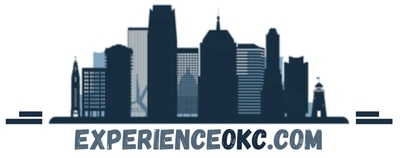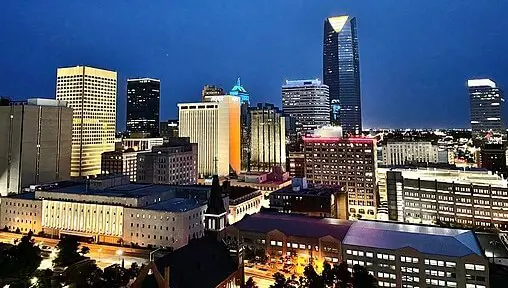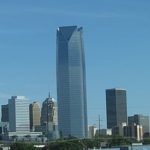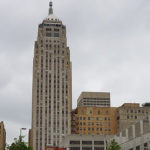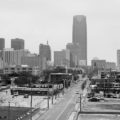Things to Know About Oklahoma City Before Moving Here
If you’re thinking about moving to Oklahoma City, it’s a good idea to know a little about the city.
With a population of more than 650,000 people (1.4 million including the metropolitan), Oklahoma City is a vibrant and growing metropolis that is home to a diverse range of demographics, including young professionals, families, and retirees.
In this article, we will take a closer look at what it’s like to live in Oklahoma City, examining the city’s economy, education, healthcare, and climate, among other things.
What’s the overall culture like in Oklahoma City?
 The overall culture in Oklahoma City is shaped by its history, geography, and diverse population. The city has a strong sense of community and pride in its western heritage, which is reflected in its many museums, cultural events, and festivals celebrating the cowboy and Native American cultures.
The overall culture in Oklahoma City is shaped by its history, geography, and diverse population. The city has a strong sense of community and pride in its western heritage, which is reflected in its many museums, cultural events, and festivals celebrating the cowboy and Native American cultures.
Oklahoma City is also a hub for the arts, with a thriving arts district and a growing music scene. The city is home to a diverse population, with residents from many different backgrounds and cultures, which has led to a rich culinary scene featuring a variety of international cuisines.
Overall, Oklahoma City is a welcoming and friendly city with a strong sense of identity and a growing appreciation for its diverse cultures and traditions.
Demographic
Oklahoma City has a diverse demographic makeup, with a majority of the population identifying as White (55.9%), followed by Black or African American (14.8%), Hispanic or Latino (18.4%), Asian (5.5%), Native American (4.4%), and 1% listed as other.. The city has a slightly higher percentage of females than males.
The median age in Oklahoma City is 35 years old, and the population is relatively evenly distributed across all age groups. Approximately 47.6% of the population is married, while 29.2% have never been married. The median household income in Oklahoma City is $59,679, with approximately 16.6% of the population living below the poverty line.
Political Views
Oklahoma City is generally considered to be politically conservative, with a majority of residents identifying as Republicans or leaning towards conservative views. This is reflected in the city’s voting patterns, with Oklahoma County, which includes Oklahoma City, consistently voting for Republican candidates in local, state, and federal elections.
However, there is also a growing population of younger and more progressive residents, particularly in the urban core, who are advocating for more progressive policies and increased representation for marginalized communities. Despite these trends, the overall political climate in Oklahoma City, as well as most of the state, remains largely conservative.
Climate
Oklahoma City has a humid subtropical climate with hot summers and relatively mild winters. The city experiences a wide range of temperatures throughout the year, with average highs in the summer ranging from the mid-90s°F to low 100s°F, and average lows in the winter ranging from the mid-20s°F to mid-30s°F.
The city receives an average of around 34 inches of precipitation per year, with most of it falling in the spring and early summer months. Severe weather is common in Oklahoma City, including thunderstorms, and occasionally tornados as well as winter storms. Learn more about Oklahoma City’s weather here.
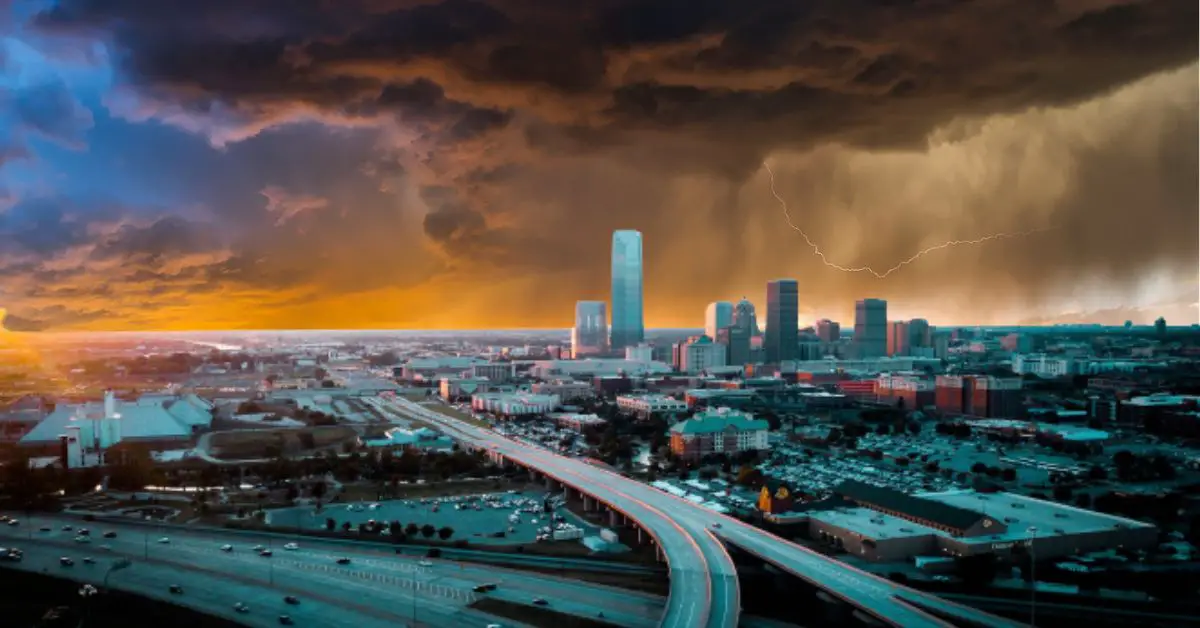
Traffic
The traffic in Oklahoma City is generally manageable compared to other major cities in the United States, with moderate levels of congestion during peak rush hour times. The city’s infrastructure is designed to accommodate a high volume of traffic, with a network of highways and major thoroughfares that allow for easy access to different parts of the city.
However, some areas of the city experience heavier traffic than others, particularly during events and festivals, such as the State Fair or Thunder NBA games. Overall, drivers in Oklahoma City can expect a relatively smooth and stress-free commute, although it’s always important to exercise caution and be aware of any road construction or closures that may cause delays. You can read about Oklahoma City’s traffic in more detail here.
Public Education
As the largest school district in the state of Oklahoma, the Oklahoma City Public Schools (OKCPS) serves more than 35,000 students across 70 schools. It has a diverse student population, with students from different cultural and socioeconomic backgrounds.
The district serves a high number of students who are economically disadvantaged, English language learners, and students with disabilities. Despite the challenges faced by the district, there have been recent efforts to improve the quality of education and outcomes for students. In recent years, the district has focused on reducing class sizes, increasing teacher pay, and providing additional support to struggling schools.
One notable initiative is the Great Pathways program, which aims to provide students with a comprehensive education that prepares them for college, careers, and life. The program offers students a variety of learning opportunities, including internships, work-based learning, and advanced coursework.
However, the Oklahoma City public education system still faces significant challenges, including a shortage of teachers and resources, low graduation rates, and achievement gaps between different student groups. The district also faces ongoing funding challenges, with limited resources to support the needs of students and schools.
While there are still areas for improvement, there is hope that continued efforts will lead to positive outcomes for students and communities. For better educational opportunities in the public school system, a family may want to consider living in a suburb just outside of Oklahoma City limits such as Edmond, Deer Creek, Moore, or Norman.
Healthcare & Hospitals
 Oklahoma City has a variety of hospitals, clinics, and medical facilities that provide healthcare services to the community. According to the 2021 Healthiest Communities Rankings by U.S. News & World Report, Oklahoma City ranks 81st out of 500 communities in the United States for healthcare. The rankings take into account factors such as access to healthcare, healthcare outcomes, healthcare disparities, and public health.
Oklahoma City has a variety of hospitals, clinics, and medical facilities that provide healthcare services to the community. According to the 2021 Healthiest Communities Rankings by U.S. News & World Report, Oklahoma City ranks 81st out of 500 communities in the United States for healthcare. The rankings take into account factors such as access to healthcare, healthcare outcomes, healthcare disparities, and public health.
Oklahoma City is home to several highly regarded hospitals, including OU Medical Center, which is nationally ranked in 6 adult specialties by U.S. News & World Report’s 2021-2022 Best Hospitals rankings, and Integris Baptist Medical Center, which is ranked high-performing in 3 adult specialties.
However, like many cities in the United States, Oklahoma City faces challenges in terms of healthcare access and affordability, particularly for underserved populations. The state of Oklahoma also has some of the highest rates of uninsured individuals in the country, which can impact healthcare access and outcomes.
Cost of Living
Oklahoma City is known for having a lower cost of living compared to many other major cities in the United States. However, the cost of living can still vary depending on individual lifestyle and other factors. Here’s an overview of some of the typical expenses:
– Housing: As of the beginning of 2023, the average home price in Oklahoma City is $289,000, making it well below the national average. Rent for a one-bedroom apartment in the city center is typically around $900 per month, while a three-bedroom apartment outside the city center may cost around $1,200 per month.
– Utilities: The cost of utilities can vary depending on the season and individual usage, but the average cost for basic utilities (electricity, heating, water, and garbage) for a 915-square-foot apartment is around $160 per month.
– Transportation: Gasoline typically averages below the national average here, and the city has a relatively low cost of public transportation system. A monthly bus pass costs around $50, and the city has a growing network of bike lanes and trails.
– Food: The cost of food can vary depending on individual preferences and dietary needs, but the cost of groceries and eating out is generally lower than in other major cities. A basic dinner for two at a mid-range restaurant may cost around $50, while a gallon of milk typically costs around $4.
WATCH: 5 Things You Should Know Before Moving to OKC:
Crime Rate
Oklahoma City has a higher crime rate compared to the national average, with property crime being more prevalent than violent crime. According to recent statistics, the city’s crime rate has declined over the past few years, with a 5% decrease in overall crime in 2020.
However, certain areas within the city have higher crime rates than others, particularly in neighborhoods with high poverty rates. Efforts are being made to reduce crime in the city through initiatives such as community policing, increased patrols, and neighborhood watch programs. Additionally, the city has implemented various measures such as improved lighting and security cameras in public areas to deter crime.
Lowest Crime Rate Neighborhoods:
Nichols Hills: This affluent neighborhood is known for its excellent schools, and proximity to downtown Oklahoma City. It features large homes on spacious lots, as well as several parks and recreational areas.
Edmond: Located just north of Oklahoma City, Edmond is a popular suburb with highly-rated schools and a thriving downtown area. It offers a range of housing options, from historic homes to new construction.
Deer Creek: This rapidly growing suburb in northwestern Oklahoma City is known for its top-rated schools and family-friendly atmosphere. It offers a mix of new construction and established homes, as well as easy access to major highways and shopping areas.
Quail Creek: Quail Creek is a neighborhood located in the north-central part of the city and is known for its large, well-kept homes and lush greenery.
Crown Heights: Crown Heights is a charming neighborhood located just east of Edgemere Park. The area features many beautiful homes and is known for its friendly neighbors and walkable streets.
The Village: Located just west of Nichols Hills, The Village is a small, tight-knit community and highly-rated schools. It features a variety of housing options, from affordable starter homes to larger, more expensive properties.
Mesta Park: Widely considered one of the best neighborhoods to live in Oklahoma City and offers a unique blend of historic charm and modern convenience. The neighborhood features a variety of beautiful homes, ranging from Craftsman bungalows to Victorian mansions, and is known for its tree-lined streets and lush green space.
Highest Crime Rate Neighborhoods:
When considering where to live or explore in Oklahoma City, you may be interested in which areas are the least safe. Based on crime data from the Oklahoma City Police Department, the following neighborhoods and areas have reported the highest rates of crime:
Downtown: The downtown area of Oklahoma City has a higher crime rate compared to other areas in the city due to the high concentration of bars, restaurants, and entertainment venues.
Capitol Hill: Capitol Hill is a neighborhood south of downtown with a higher crime rate, particularly in regards to property crimes such as burglary and theft.
Northwest Oklahoma City: This area of the city includes the neighborhoods of The Village, Warr Acres, and Nichols Hills, and has a higher rate of property crimes compared to violent crimes.
Northeast Oklahoma City: This area of the city has a higher rate of violent crimes compared to other areas, particularly in the neighborhoods of Lincoln Terrace, Spencer, and Douglas.
South Oklahoma City: This large area of the city includes the neighborhoods of South Walker Avenue, Shidler-Wheeler, and Stockyards City, and has a higher rate of property crimes such as burglary and theft.
It is important to note that crime rates can vary within neighborhoods and that many neighborhoods in Oklahoma City are safe and thriving communities. The Oklahoma City Police Department and local authorities are continually working to address issues of crime and safety in the city.
So what are the pros and cons to living in Oklahoma City?
Here’s a list of some of some of the good things, as well as some negative things about OKC:
PROS of Living in OKC:
1. Affordable cost of living: Oklahoma City has a lower cost of living compared to other major cities in the United States.
2. Strong economy: Oklahoma City has a strong economy with a low unemployment rate and a growing job market.
3. Rich culture: Oklahoma City has a rich culture with a variety of museums, theaters, and art galleries.
4. Central location: Oklahoma City is centrally located in the United States, making it an ideal location for travel and business opportunities.
5. Access to outdoor recreation: Oklahoma City has access to a variety of outdoor recreation opportunities, such as lakes, parks, and hiking trails.
6. Great food scene: Oklahoma City has a diverse and vibrant food scene, with a variety of restaurants and cuisines to choose from.
7. Excellent higher education options: Oklahoma City has several universities and colleges, including the University of Oklahoma, which is ranked among the top public universities in the country.
8. Family-friendly environment: Oklahoma City is a family-friendly city with a variety of activities and attractions for children.
9. Strong sports culture: Oklahoma City is home to several professional sports teams, including the Oklahoma City Thunder basketball team.
10. Low traffic congestion: Oklahoma City has lower traffic congestion compared to other major cities, making it easier to get around.
CONS of Living in OKC:
1. Extreme Weather: Central Oklahoma is known for its severe weather, including tornadoes, flash flooding, and occasional ice storms that cause power outages and tree damage.
2. Limited public transportation options: The city has a limited public transportation system, which can make it challenging for those who don’t have access to a car.
3. High rates of poverty: Oklahoma City has a high poverty rate compared to other cities in the United States, which can contribute to socioeconomic challenges.
4. Limited nightlife: Compared to other major cities, Oklahoma City has limited nightlife options.
5. Strong political leaning: Oklahoma City is located in a state with a predominantly conservative political climate, which may not be appealing to those with more liberal views.
6. Public Education Challenges: There is low funding for the OKC Public School system, and teachers are grossly underpaid compared to the national average.
7. Limited cultural diversity: Oklahoma City is not as culturally diverse as other major cities, which can limit cultural experiences and opportunities.
8. Limited job opportunities: While the city’s economy is growing, job opportunities may be limited in certain industries.
9. Limited walkability: The city is designed for driving, which can make it challenging for pedestrians and cyclists to navigate.
10. High rates of drug abuse: Oklahoma City has high rates of drug abuse, particularly opioid abuse.
WATCH: Local Realtor, Laura Canedy, gives her two cents on the Pros & Cons of moving to the Oklahoma City area from out of state.
Frequently Asked Questions about Oklahoma City
What is it like to live in Oklahoma City?
Living in Oklahoma City offers a blend of small-town charm and big-city amenities. The city is known for its friendly locals and welcoming atmosphere, as well as its rich history and culture. Residents can enjoy a variety of outdoor activities, including hiking, fishing, and boating, thanks to the city’s numerous parks and lakes.
However, Oklahoma City is not without its challenges, including extreme weather conditions, limited public transportation options, and a higher-than-average crime rate in certain areas. Despite these challenges, many residents find Oklahoma City to be a great place to live, work, and raise a family.
See 21 Reasons People Love Living in Oklahoma City
How much money do you need to live in Oklahoma City?
To live comfortably in Oklahoma City, you should be making around $60,000 per year. ($59,019 for homeowners / $62,691 for renters according to gobankingrates.com)
Are people in Oklahoma City friendly?
Yes, people in Oklahoma City are generally known for their friendliness and hospitality. This is reflected in the city’s “OKC Nice” reputation, where locals are often described as welcoming and helpful to visitors and new residents alike. Many people in the city pride themselves on their friendly demeanor and welcoming culture, making it a pleasant place to live and visit.
Is Oklahoma City a good place to live?
Oklahoma City can be a great place to live. It has a low cost of living compared to other major cities, they have a strong and diverse economy for different ranges of industries and they have a variety of cultural attractions. Aside from this, there are also outdoor activities and it has a family-friendly environment as it has excellent schools and tertiary hospitals available.
Of course, like any city, Oklahoma City has its own unique set of challenges and drawbacks, such as extreme weather conditions, limited public transportation options, and some areas of high poverty and crime. However, many people find that the benefits of living in Oklahoma City outweigh these challenges, making it a good place to live overall.
Concluding Thoughts:
In conclusion, moving to Oklahoma City requires careful consideration of various factors, such as the things mentioned in this article. While the city offers many benefits, such as affordable housing and a friendly community, there are also challenges to living in the area, such as extreme weather conditions and a higher-than-average crime rate in certain neighborhoods.
However, with its blend of small-town charm and big-city amenities, Oklahoma City can be a great place to call home for those who prioritize affordable living, outdoor activities, and a welcoming community. As with any major move, it’s important to research and weigh all the factors before making a decision, but for those looking for a new adventure, Oklahoma City may just be the perfect place to start!
